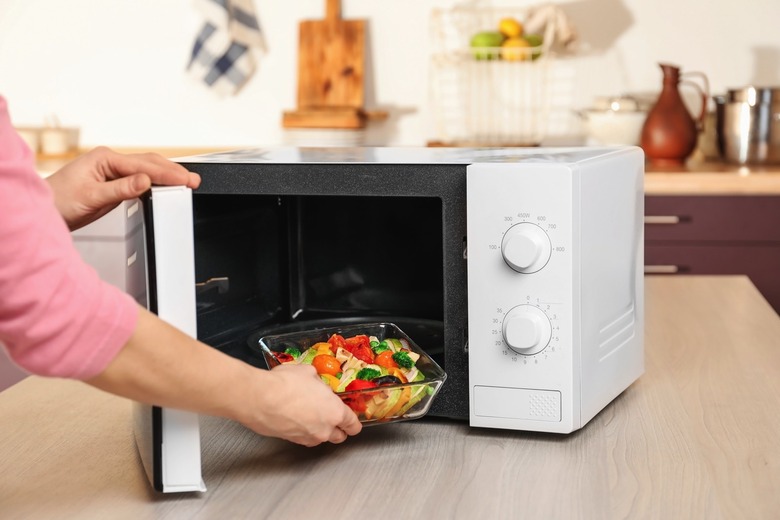The Science Behind Why You Shouldn't Microwave Food In Plastic Containers
I've used plastic containers to heat food in the microwave for years. I bet plenty of people routinely use plastic containers that are safe for the microwave, even if only to cover the plate of food they might be heating. But no matter what the packaging tells you, experts still believe that using plastic in the microwave is bad for your health.
I've always paid attention to using plastic containers that are deemed safe to microwave. I never stopped considering what that safety meant. It's not about human health. It's about the ability of said plastic container to maintain its chemical structure while you're exposing it to microwaves repeatedly. That is, the plastic won't melt when exposed to all that energy.
But even safe plastic can contaminate food while they're exposed to microwaves. It's not just microplastics that might end up in your food, which are the plastic components resulting from the breakdown of plastics.
They're so tiny that they've been found in plenty of human tissues, including the brain, heart, and even male reproductive organs. It's still unclear how microplastics will impact various organs, but they certainly don't belong there.
Medical experts explained to Food and Wine that other chemicals inside plastic containers might end up in food during the microwave process.
Bisphenol-A (BPA) and phthalates can trickle from a plastic container into food when both are heated to high temperatures. The substances then end up in your body, possibly causing unwanted side effects.
The report also cites experiments from a 2023 University of Nebraska-Lincoln study. The researchers placed deionized water or 3% acetic acid inside baby containers made from polypropylene and polyethylene. They tried to mimic the dairy products, fruit, and vegetables you'd heat in a microwave.
The researchers found that the amount of microplastics in food and liquid could vary, but they were present after microwave heating. The researchers estimated that children and toddlers who consume food and liquid heated in plastic containers in a microwave take in the largest relative concentrations of microplastics.
In a second experiment, the scientists tested those microplastic concentrations on kidney cells in a lab. They found that only 23% of the cells survived.
The conclusion is simple: The more plastic containers you use in the microwave, the more it might impact your health. The experts cited various potential health risks associated with exposure to plastic chemicals, including cancer, hormone disruption, fertility issues, metabolic disease, and neurological disease.
For example, a recent study found that people with nanoplastics in their cardiovascular system were 4.5 times more likely to develop heart attacks, stroke, and death.
Glass is the best alternative to plastics, so if you frequently use your microwave, you should switch to that.
Another option that experts recommended to Food and Wine is plastics that say "BPA-free" on the label. It's better than those containing BPA, but you'd still put a plastic container in the microwave. It might still contain bisphenol chemicals that can be harmful.
